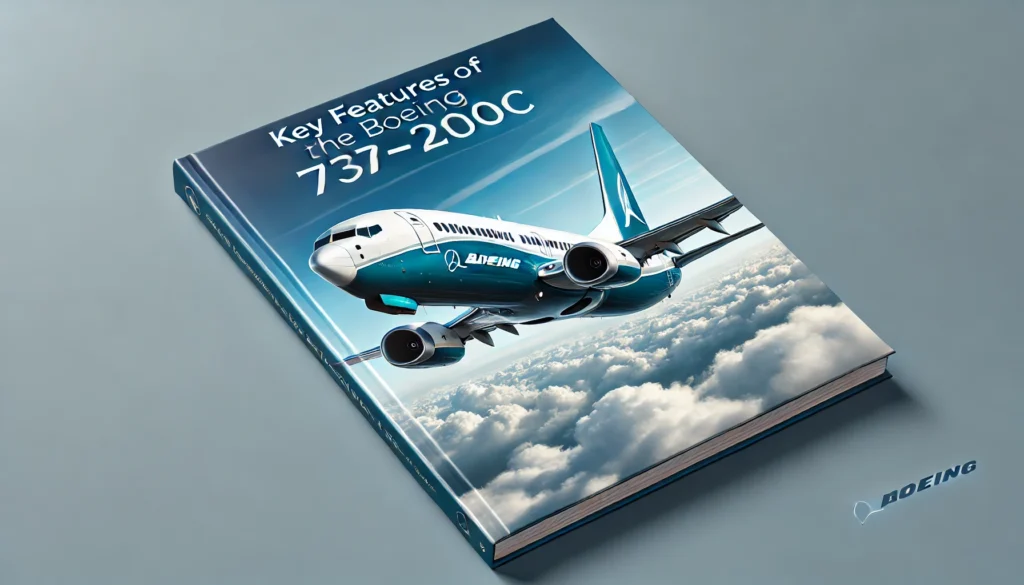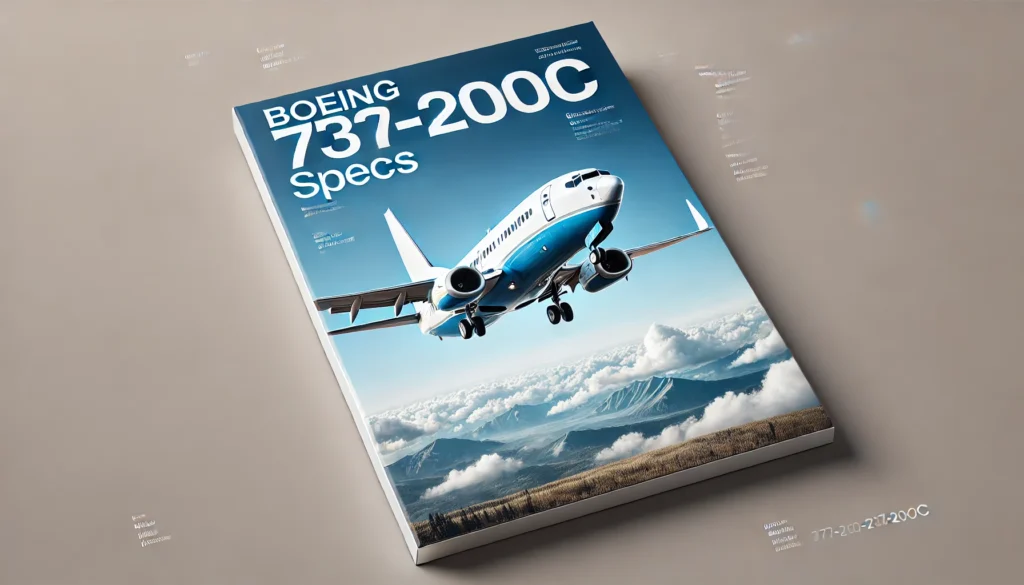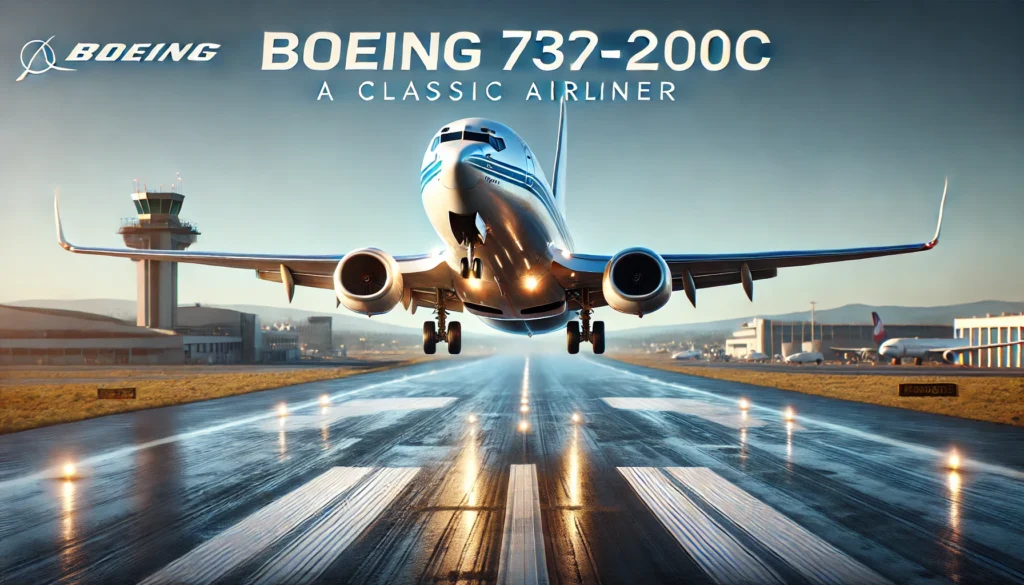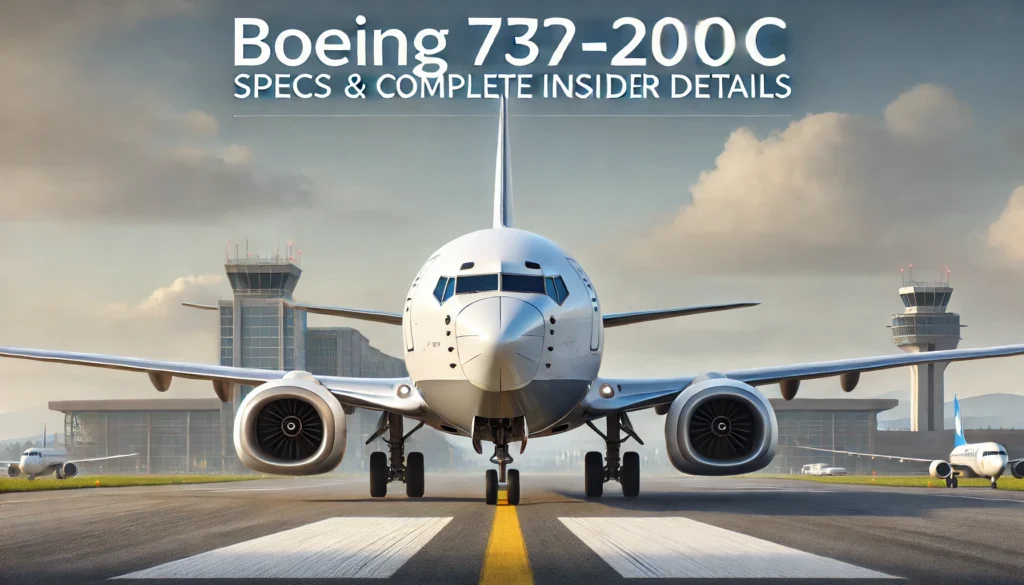Welcome to “Wings Over Cloud,” your trusted source for all things aviation. Today, we’re diving deep into the Boeing 737-200C, a unique variant of the Boeing 737 family that has played a significant role in both commercial and cargo aviation. This article will explore the history, features, and operational capabilities of the Boeing 737-200C, providing you with all the information you need about this versatile aircraft.
Introduction of the Boeing 737-200C
The Boeing 737-200C, where “C” stands for “Convertible,” is a remarkable variant designed for both passenger and cargo transport. Introduced in the early 1970s, it offers flexibility that has made it a valuable asset for various airlines and cargo operators. However, This dual-purpose capability sets the Boeing 737-200C apart from its counterparts.
Historical Background Of Boeing 737-200C
Development and Launch
The Boeing 737-200C was developed as part of Boeing’s efforts to meet the diverse needs of airlines. Launched in 1971, it quickly gained popularity due to its versatility. Moreover, The aircraft was designed to switch between passenger and cargo configurations, allowing airlines to maximize their operational efficiency.
Early Operators
Early operators of the Boeing 737-200C included airlines that needed flexible fleet options. The aircraft’s ability to serve remote and underserved routes made it an attractive choice. Additionally, its robustness and reliability ensured its popularity among cargo operators.
Key Features of the Boeing 737-200C

Convertible Design
Moreover, The standout feature of the Boeing 737-200C is its convertible design. Thus, This allows operators to switch between passenger and cargo configurations quickly. The aircraft can carry up to 130 passengers in its passenger configuration, while its cargo configuration provides ample space for freight.
Advanced Cargo Handling
The Boeing 737-200C includes advanced cargo handling systems. These systems facilitate the loading and unloading of freight, ensuring quick turnaround times. Moreover, The aircraft’s main deck cargo door is large enough to accommodate various cargo sizes, enhancing its operational flexibility.
Performance and Range
The Boeing 737-200C is equipped with Pratt & Whitney JT8D engines, providing reliable performance. Its range allows it to operate on both short and medium-haul routes, making it suitable for diverse operational needs. The aircraft’s robust design also enables it to operate in challenging environments.
Boeing 737-200C in Commercial Use
Passenger Services
In its passenger configuration, the Boeing 737-200C offers comfortable seating and amenities. Airlines have used this variant to serve both regular and remote routes, where flexibility and reliability are crucial. Moreover, The aircraft’s ability to switch configurations means it can be quickly adapted to meet varying passenger demands.
Cargo Operations
Moreover, In its cargo configuration, the Boeing 737-200C excels in transporting goods. Thus, Its spacious cargo hold and efficient handling systems make it ideal for express freight and logistics services. Cargo operators appreciate the aircraft’s versatility and reliability in meeting tight schedules.
Case Study: Successful Operators
Furthermore, Several airlines have successfully integrated the Boeing 737-200C into their fleets. For example, Alaska Airlines utilized the 737-200C to serve remote communities in Alaska, combining passenger and cargo services on a single flight. This dual-purpose capability significantly enhanced operational efficiency.
Technical Specifications Boeing 737-200C

Dimensions and Capacity
- Length: 30.53 meters (100 feet 2 inches)
- Wingspan: 28.35 meters (93 feet)
- Height: 11.33 meters (37 feet 2 inches)
- Passenger Capacity: Up to 130 passengers
- Cargo Capacity: Approximately 15,000 pounds (6,800 kg)
Performance
- Maximum Speed: 876 km/h (544 mph)
- Range: 4,300 kilometers (2,670 miles)
- Engines: Pratt & Whitney JT8D
Unique Features
The Boeing 737-200C’s unique features include its large cargo door and convertible interior. These features enable quick reconfiguration, making the aircraft suitable for various missions. Additionally, its rugged construction allows it to operate from unpaved runways and in harsh weather conditions.
Operational Flexibility of Boeing 737-200C
Adapting to Market Needs
The Boeing 737-200C’s adaptability allows operators to respond to market demands. For instance, during peak travel seasons, the aircraft can be configured for passenger service. Conversely, it can be switched to cargo mode during low passenger demand periods, ensuring optimal utilization.
Versatility in Remote Operations
The Boeing 737-200C’s design is particularly advantageous for remote operations. Its ability to land on shorter and less developed runways makes it ideal for serving remote areas. Moreover, This versatility ensures that essential goods and passengers can reach destinations that larger aircraft cannot access.
Maintenance and Upkeep of Boeing 737-200C
Reliability and Durability
The Boeing 737-200C is known for its reliability and durability. Moreover, Regular maintenance ensures that the aircraft remains in top condition, providing consistent performance. Operators often highlight the aircraft’s resilience and low operational costs as key benefits.
Maintenance Practices
Effective maintenance practices are crucial for the Boeing 737-200C. Scheduled inspections and component replacements ensure the aircraft’s longevity. Operators typically follow strict maintenance protocols to minimize downtime and maintain high safety standards.
Economic Impact
Cost Efficiency
The Boeing 737-200C offers cost efficiency due to its dual-purpose design. Thus, Operators can maximize revenue by switching between passenger and cargo services as needed. This flexibility helps reduce operational costs and increase profitability.
Market Demand
There remains a steady market demand for the Boeing 737-200C, particularly in regions requiring versatile aircraft. Moreover, Its ability to serve multiple roles ensures continued interest from airlines and cargo operators. The aircraft’s robust performance and adaptability make it a valuable asset in various markets.
The Future of the Boeing 737-200C
Technological Advancements
As technology advances, the Boeing 737-200C continues to benefit from upgrades. Modern avionics and systems enhancements improve operational efficiency and safety. These advancements ensure that the aircraft remains competitive in an evolving market.
Continued Relevance
The Boeing 737-200C’s continued relevance is evident in its ongoing use. Operators appreciate its versatility and reliability, ensuring its place in fleets for years to come. Moreover, As aviation demands evolve, the 737-200C’s adaptable design will continue to meet diverse needs.
Frequently Asked Questions
What Sets the Boeing 737-200C Apart from Other 737 Variants?
The Boeing 737-200C’s convertible design for both passenger and cargo transport sets it apart. This unique feature allows operators to maximize efficiency and revenue by quickly switching configurations to meet demand.
How Does the Cargo Handling System Work?
The Boeing 737-200C’s cargo handling system includes a large main deck cargo door and advanced loading equipment. Thus, This system facilitates quick and efficient loading and unloading of cargo, ensuring minimal turnaround time and enhancing operational efficiency.
What Are the Key Advantages of Using the Boeing 737-200C in Remote Areas?
The Boeing 737-200C’s ability to operate on shorter and less developed runways makes it ideal for remote areas. Its rugged construction and reliable performance ensure that essential goods and passengers can reach isolated destinations, where other aircraft might not be able to operate.
How Does the Maintenance of the Boeing 737-200C Compare to Other Aircraft?
The Boeing 737-200C is known for its reliability and low operational costs. Moreover, Regular maintenance, including scheduled inspections and component replacements, ensures the aircraft remains in top condition. Operators often highlight the aircraft’s resilience and straightforward maintenance procedures as key benefits.
What Is the Future Outlook for the Boeing 737-200C?
Furthermore, The future outlook for the Boeing 737-200C remains positive, as technology advances, modern avionics, and systems enhancements continue to improve its operational efficiency and safety. The aircraft’s versatile design ensures it will remain relevant and valuable in fleets for years to come.
Boeing 737-200c “Final Thoughts”

The Boeing 737-200C is a unique and versatile aircraft that has made significant contributions to both passenger and cargo aviation. Moreover, Its convertible design, reliable performance, and ability to operate in diverse environments make it a valuable asset for airlines and cargo operators. As technology advances, the Boeing 737-200C will continue to benefit from upgrades, ensuring its ongoing relevance in the aviation industry.
Thank you for exploring the Boeing 737-200C with “Wings Over Cloud.” For more detailed insights and updates on aviation, be sure to check out our other articles and resources. Moreover, also check out our latest product range. Safe travels!

